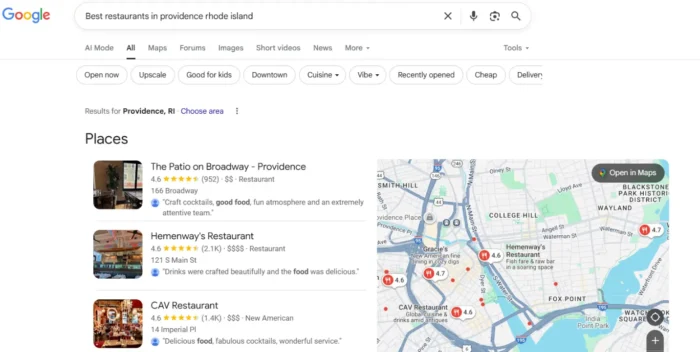These Blood Sugar-Balancing Foods Are A+ For Calming Anxiety
"In my practice, I start with the assumption that anxiety is a blood sugar issue until proven otherwise."

|

Our editors have independently chosen the products listed on this page. If you purchase something mentioned in this article, we may earn a small commission.
March 15, 2022 — 11:02 AM
In my practice, I start with the assumption that anxiety is a blood sugar issue until proven otherwise. I am not being dismissive of people’s very real suffering, nor am I implying that everyone with anxiety is diabetic. The truth is that blood sugar is not binary—you’re not either diabetic or perfectly healthy. For many of us, our bodies are operating somewhere along a spectrum of dysglycemia, in which a subtle, subclinical impairment with blood sugar regulation causes us to swing up and down throughout the day, with every blood sugar crash generating a stress response. Given that the modern diet is so blood sugar-destabilizing, these stress responses are at the root of much of the anxiety I see in my practice.
Throughout human evolution, getting enough to eat has been a life-or-death issue, so the human body has a series of checks and balances to ensure blood sugar security. Our bodies store sugar in the form of starch, called glycogen. When our blood sugar is low, a cascade of events is triggered. The adrenal glands release adrenaline and cortisol—the stress hormones— telling our liver to break down the glycogen into glucose and release it into the bloodstream. The adrenaline and cortisol also create a sense of urgency to seek out more food—which, in modern times, translates to the 3:00 p.m. hunt for snacks. This bodily system gets the job done—it puts glucose back into the bloodstream when blood sugar is low and motivates us to forage for more food. The only catch is that it also creates a five-alarm fire in the body. The body triggers a stress response to accomplish these goals, and that stress response can feel identical to anxiety.
These foods can help keep blood sugar stable and anxiety under control.
Functional Nutrition Training
A cutting-edge nutrition deep dive taught by the world’s foremost health & wellness experts.

If you only make one dietary adjustment in the name of curbing your anxiety, I would suggest addressing your relationship with sugar. Do whatever you can to keep your blood sugar stable and consider reducing your sugar intake overall.
Here are the components of your new plate: in general, about a quarter of your plate should be well-sourced protein, a quarter should be starch, and half should be vegetables, with healthy fats throughout.
The one thing almost all nutrition experts seem to agree on is that vegetables are key to good health. By offering abundant vitamins, minerals, and antioxidants, vegetables support brain function and help with anxiety. So, eat all vegetables, and plenty of them. Let vegetables be at least half your plate and the centerpiece of each and every meal. In the warmer months, aim to eat more raw vegetables; in the colder months, go for cooked and stewed vegetables. Prepare them with healthy fat, such as olive oil, avocado oil, or ghee (clarified butter). If it’s in your budget, try to buy organic whenever possible, especially for skinless veggies.
Proteins (the more variety, the better):
When adding protein—which provides the necessary building blocks for peptide neurotransmitters, such as serotonin—to your diet, aim to eat a variety of well-sourced, pasture-raised meat and poultry as well as wild, small, cold-water fatty fish, such as sardines, anchovies, arctic char, and salmon. To ensure you get a wide range of nutrients, eat a variety of different animals.
If you see it on the menu, opt for a game meat—the less mainstream the meat, the less likely it’s a product of large agribusiness.
Think of meat more as a condiment than as a centerpiece.
In addition to eating a variety of different animals, I also encourage you to eat every part of the animal—nose to tail. Organ meats have fallen out of favor in the West because we’re so focused on eating muscle meats. But organ meats are uniquely nutrient-dense, so it’s worth making a point of seeking them out. Admittedly, it can be tricky to figure out how to incorporate organ meat into a modern American diet. The way I make it work is by purchasing pastured chicken liver pâté from my butcher. Chicken liver is a good source of zinc, copper, manganese, vitamins A and C, B vitamins, iron, phosphorus, and selenium. In other words, it’s Mother Nature’s multivitamin. If you can throw back a spoonful of pâté every few days, it’ll go a long way toward meeting your nutritional needs.
When it comes to gleaning the nutritional benefits of meat for brain health, it doesn’t require eating a steak the size of your head. Think of meat more as a condiment than as a centerpiece. And if eating meat does not jibe with your ethical principles, my vegetarian standbys are any combination of rice and beans (which form a complete protein when eaten together), eggs, and full-fat dairy (if tolerated).
Excerpted from The Anatomy of Anxiety by Ellen Vora, MD. Copyright © 2022 by Ellen Vora, MD.
https://www.mindbodygreen.com/articles/blood-sugar-balancing-foods-for-anxiety

 ValVades
ValVades 
































